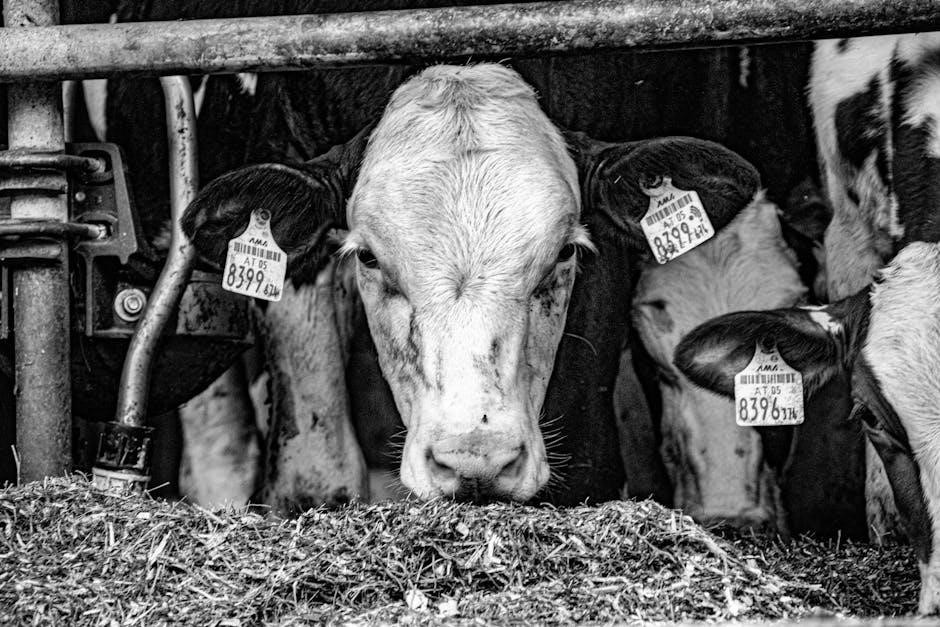Tailoring is a primary profession in WoW Cataclysm, enabling players to craft cloth armor, bags, and various items for casters. This guide covers its fundamentals and importance in the game.
1.1 What is Tailoring?
Tailoring is a primary profession in World of Warcraft: Cataclysm that allows players to craft cloth armor, bags, and other items. It is particularly useful for classes like Priests, Mages, and Warlocks, who rely on cloth armor. Tailors can create a variety of goods, including robes, hoods, and enchanting materials. The profession also enables the production of bandages, which are essential for healing. To craft items, tailors use materials such as cloth, threads, and other resources gathered from enemies or purchased from vendors. Tailoring is a versatile skill that combines creativity with practicality, making it a valuable asset for both players and their characters in Azeroth.
1.2 Benefits of Tailoring in Cataclysm
Tailoring in World of Warcraft: Cataclysm offers numerous benefits, making it a valuable profession for players. It allows the creation of cloth armor, which is essential for casters like Priests, Mages, and Warlocks. Tailors can craft bags, increasing inventory space, and produce bandages for emergency healing. The profession also enables the creation of cosmetic items and high-level gear, such as Dreamcloth, which is used for crafting epic items. Additionally, Tailoring provides a steady source of income by selling crafted goods on the auction house. Mastering this profession enhances character utility, supports progression, and offers a competitive edge in both PvE and PvP environments.

Training and Prerequisites
To begin Tailoring, visit a profession trainer in major cities like Stormwind or Orgrimmar. No prerequisites are required, making it accessible to all players immediately.
2.1 How to Learn Tailoring
Learning Tailoring in WoW Cataclysm is straightforward. Visit a profession trainer in major cities like Stormwind, Orgrimmar, or other faction hubs. Speak to the Tailoring trainer, who will teach you the profession. No prerequisites are required to learn Tailoring, making it accessible to all players. Once trained, your Tailoring skill will start at level 1. Open your profession window to view available recipes and begin crafting. You can craft simple items like Linen Cloth or Bolt of Linen Cloth to start leveling. Trainers also offer expert and artisan recipes as you progress. Ensure you have sufficient materials before crafting to maximize efficiency. Tailoring trainers are easily located by asking city guards for directions.
2.2 Tailoring Trainers in Cataclysm
Tailoring trainers in WoW Cataclysm can be found in major cities and faction hubs. For Alliance players, trainers are located in Stormwind City, while Horde players can find them in Orgrimmar. Other trainers are scattered across key locations like Darnassus, Ironforge, and Thunder Bluff. These trainers teach the basics of Tailoring and advanced recipes as you progress. Notable trainers include Angela Mistraser in Stormwind and Zulih in Orgrimmar. They also provide expert and artisan patterns, allowing you to specialize further. Trainers are essential for unlocking high-level recipes and improving your crafting skills. Finding them is easy, as city guards can direct you to their locations. Ensure you visit trainers regularly to learn new recipes and enhance your Tailoring proficiency. Their guidance is crucial for mastering the profession efficiently in Cataclysm Classic.

Leveling Guide: 1-525
This guide provides a detailed roadmap for leveling Tailoring from 1 to 525, focusing on efficient material usage and strategic recipe selection to maximize skill gains.
3.1 Leveling from 1-75
Starting your Tailoring journey in WoW Cataclysm, the first 75 levels lay the foundation for your crafting skills. Begin by gathering Linen Cloth, the primary material for this phase. Craft Bolt of Linen Cloth repeatedly until you reach skill level 50. Once you’ve mastered the basics, switch to creating Mooncloth or other simple cloth armor pieces to continue progressing. This phase is relatively straightforward, requiring minimal resources but consistent crafting to build your skill. By the time you hit 75, you’ll have a solid foundation to tackle more complex recipes in the next stages of your Tailoring journey.
3.2 Leveling from 75-150
Reaching level 75 marks the beginning of intermediate Tailoring in WoW Cataclysm. Focus on crafting items like Woolen Cloak or Bolt of Wool to progress steadily. As you advance, incorporate Silk Cloth into your recipes, such as crafting Azure Silk Cloak or Silk Headband. These patterns not only boost your skill but also provide usable gear for your character or alts. Continue using Wool Cloth for consistency, as it remains abundant and cost-effective. By level 150, you’ll unlock more complex recipes, setting you up for the next phase of your Tailoring journey. Ensure you stockpile materials to maintain a smooth progression without delays.
3.3 Leveling from 150-225
At level 150, Tailoring progresses into more advanced recipes, primarily using Mageweave Cloth. Crafting Mageweave Cloak and Mageweave Headband becomes essential, as these items provide significant skill gains. This phase also introduces the use of heavier cloths like Shadowweave, offering more durability and stat benefits. Focus on crafting these mid-tier items to efficiently reach level 225. The materials required during this range increase in quantity, so ensure a steady supply of Mageweave Cloth to maintain progress. These crafted pieces are not only useful for skill leveling but also provide decent gear for your character or alts. This phase sets the foundation for crafting more complex items in later levels.
3.4 Leveling from 225-300
From 225 to 300, Tailoring shifts to using Runecloth, a more advanced material. Crafting Runecloth Shoulders and Runecloth Belts becomes the primary focus, as these recipes provide consistent skill gains. These items are particularly useful for players or alts needing durable cloth gear. Ensure a steady supply of Runecloth to maintain progression. This phase introduces more complex patterns, requiring attention to material quantities. The demand for these crafted pieces remains high, making them valuable for both personal use and potential sale. This range is crucial for building proficiency before advancing to higher-level recipes. Proper material management is key to efficiently reaching 300. This phase solidifies your foundation in Tailoring, preparing you for more intricate crafting ahead.
3.5 Leveling from 300-375
Leveling Tailoring from 300 to 375 in Cataclysm Classic focuses on utilizing Netherweave Cloth, a higher-tier material. Crafting Netherweave Tunic and Netherweave Robe becomes essential, as these recipes provide consistent skill gains. These items are highly sought after for their durability and utility, making them valuable for both personal use and sale. Ensure a steady supply of Netherweave Cloth to maintain progression. This phase introduces more intricate patterns, requiring precise material management. Additionally, recipes like Primal Mooncloth and Spellfire Tailoring begin to appear, offering unique crafting opportunities. Efficient use of materials is crucial to avoid delays. This range sets the stage for advanced crafting, preparing you for the challenges ahead.

3.6 Leveling from 375-450
From 375 to 450, Tailoring in Cataclysm Classic shifts focus to Embersilk Cloth, a key material for high-level crafting. Recipes like Embersilk Bag and Embersilk Cloak become central, offering steady skill progression. These items are in demand due to their utility for players and guilds. Crafting Dreamcloth also begins in this phase, requiring 5 Embersilk Cloth and a weekly cooldown. This luxurious fabric is used for epic gear, making it highly valuable. Additionally, Bolt of Embersilk is crafted to support higher-level recipes. Managing material supplies efficiently ensures smooth progression. This range introduces more complex patterns, preparing you for the final stages of Tailoring mastery. The demand for these items makes this phase both rewarding and challenging.
3.7 Leveling from 450-525
Reaching the final stretch of Tailoring in Cataclysm Classic, leveling from 450 to 525 focuses on mastering high-end recipes. Dreamcloth becomes a cornerstone, crafted using 5 Bolt of Embersilk Cloth and a weekly cooldown. This luxurious fabric is essential for creating epic gear and high-demand items. Recipes like the Illusionary Bag and light tap pants are popular, offering consistent skill gains. Additionally, crafting Bolt of Embersilk remains crucial for supporting higher-level patterns. With limited recipes, efficient material management is key. This phase emphasizes quality over quantity, as players refine their skills to produce top-tier items. The culmination of your Tailoring journey, this range prepares you for crafting the best gear in the game, making it a rewarding conclusion to your progression.

Crafting Gear and Items
Tailors craft cloth armor for casters, decorative items, and essential bags. High-level crafting includes epic gear, bags, and cosmetic accessories, enhancing both functionality and character appearance in Cataclysm.
4.1 Cloth Armor Sets
Cloth armor sets in WoW Cataclysm are crafted exclusively by tailors and are tailored for Priests, Mages, and Warlocks. These sets provide unique stats like intellect, spirit, and stamina, making them essential for caster classes. Popular sets include the “Embersilk” and “Dreamcloth” armor, which require advanced materials like Bolt of Embersilk Cloth and Volatiles. Crafting these sets not only enhances character performance but also offers a creative outlet for tailors. The ability to craft armor sets at higher skill levels makes tailoring a valuable profession for both personal use and selling on the auction house. Each set requires specific patterns, which can be learned from trainers or discovered through recipes.
4.2 Cosmetic Items and Accessories
Beyond functional gear, tailoring in WoW Cataclysm allows the creation of cosmetic items and accessories, adding a touch of personal style to your character. Tailors can craft shirts, which are purely cosmetic and offer no stats but enable character customization. Additionally, tailors can produce various types of bags, essential for inventory management. These bags come in different sizes, from small 10-slot bags to larger 20-slot versions, and are crafted using materials like cloth and threads. Crafting these items not only enhances your character’s appearance but also provides practical benefits, making tailoring a versatile and valuable profession. These cosmetic items and accessories can also be sold on the auction house, offering a profitable outlet for skilled tailors.

Materials and Resources
Tailoring in WoW Cataclysm requires various materials, including cloth, threads, and volatiles. These resources are essential for crafting armor, bags, and other items efficiently in the game.
5.1 Herbs and Threads
Herbs and threads are foundational materials in WoW Cataclysm Tailoring. Herbs like Mountain Silk and Goldthorn are used to craft threads, essential for creating cloth armor and bags. Threads are crafted from herbs and are used in various recipes. Players can gather herbs through farming or purchase them from the auction house. Having a steady supply of these materials is crucial for leveling Tailoring efficiently and crafting high-demand items like Embersilk Cloth and Dreamcloth. Managing resources wisely ensures progress without delays, making herbs and threads vital components of a Tailorer’s inventory.
5.2 Netherweave Cloth and Bolt of Silk Cloth
Netherweave Cloth and Bolt of Silk Cloth are essential materials in WoW Cataclysm Tailoring. Netherweave Cloth is crafted from Frostweed and Dreaming Glory, used in high-level recipes like bags and gear. Bolt of Silk Cloth is created from Silk Cloth and is a key component for crafting various armor sets and items. Both materials are in high demand, making them vital for Tailors. Players can craft these cloths using looms found in major cities or purchase them from vendors. Efficiently managing these resources ensures smooth progression in crafting and leveling. These materials are particularly important for creating gear for casters and other high-level items.
5.3 Volatiles and Embersilk Cloth
Volatiles are rare crafting materials in WoW Cataclysm, obtained from disenchanting epic items or purchasing from vendors. They are crucial for high-level Tailoring recipes, including Dreamcloth and epic gear. Embersilk Cloth is another key material, crafted from Silk Cloth and used in creating powerful items like cloaks and robes. Both materials are essential for advanced crafting, particularly for recipes with weekly cooldowns. Players often farm or trade for these resources due to their scarcity and high demand. Efficient use of Volatiles and Embersilk Cloth ensures access to the best gear and items Tailoring has to offer in Cataclysm.

High-Level Crafting
High-level Tailoring in WoW Cataclysm involves crafting epic gear and accessories, including Dreamcloth, which requires rare materials like Volatiles and Embersilk Cloth. Weekly cooldown recipes enhance crafting efficiency.
6.1 Crafting Epic Gear
Crafting epic gear in WoW Cataclysm Tailoring requires high skill levels and rare materials. Players can create powerful items like the Dreamcloth and Windwool gear sets. These items are highly sought after by casters and healers for their superior stats; Recipes for epic gear often involve combining multiple Volatiles and Embersilk Cloth, which can be challenging to acquire. Additionally, some patterns are only available through cooldowns or specific vendors, adding an extra layer of complexity. Mastering these recipes not only enhances your character’s performance but also boosts your reputation as a skilled Tailor in the game.
6.2 Dreamcloth and Weekly Cooldown Recipes
Dreamcloth is a highly sought-after material in WoW Cataclysm Tailoring, crafted from 8 Bolt of Embersilk Cloth and 30 of one of the Volatiles; This process is limited by a weekly cooldown, making Dreamcloth rare and valuable. Players can craft one Dreamcloth per week, which is essential for creating high-end epic gear. Additionally, several weekly cooldown recipes are available, allowing Tailors to produce unique items like epic cloaks or powerful armor sets. These recipes often require multiple Volatiles and other rare materials, making them challenging to complete. Mastering these cooldown recipes is crucial for crafting the best gear and enhancing your character’s performance in raids and PvP. This feature adds depth to the Tailoring profession, rewarding skilled players with exclusive rewards.

Tips for Efficient Leveling

Efficiently farm materials, use cooldowns wisely, and craft in bulk to save time. Plan recipes in advance to minimize wasted resources and accelerate skill progression.
7.1 Farming Materials Efficiently
Farming materials is crucial for leveling Tailoring. Focus on gathering cloth such as Netherweave Cloth, Silk Cloth, and Embersilk Cloth efficiently by farming mobs in high-yield zones. Use addons like Gatherer to optimize routes. Prioritize daily cooldowns like Dreamcloth to conserve resources. Farm Volatiles and Herbs in bulk to reduce downtime. Manage inventory space to avoid clutter and ensure quick access to materials. Utilize cooldowns and weekly recipes strategically to maximize efficiency. Plan crafting sessions in advance to minimize wasted materials. Consider farming during off-peak hours for less competition. Use professions like Enchanting or Alchemy to supplement material needs. Always prioritize quality over quantity to maintain progression momentum.
7.2 Using Cooldowns and Recipes Wisely
Utilizing cooldowns and recipes effectively is key to efficient Tailoring progression. Focus on high-demand items like Dreamcloth, which requires 5 Embersilk Cloth bolts and 30 Volatiles. Prioritize recipes that yield the most valuable gear or materials. Plan crafting sessions around weekly cooldowns to maximize output. Avoid crafting during peak hours to reduce competition for resources. Use addons like Tailoring Helper to track cooldowns and optimize crafting queues. Always craft in bulk to minimize downtime and resource waste. Consider crafting lower-demand items during off-peak times to maintain progress. Balance recipe usage to avoid material shortages. Strategically craft high-value items to supplement your progression and reduce reliance on farming.

Tailoring in WoW Cataclysm is a rewarding profession that offers versatility and significant benefits for players. By mastering Tailoring, you can craft essential items like cloth armor, bags, and enchantments, making it a valuable skill for both PvE and PvP. The guide provides a comprehensive roadmap to level from 1 to 525, ensuring efficient progression. With careful planning, resource management, and strategic use of cooldowns, Tailoring becomes a satisfying and profitable profession. Whether crafting for personal use or selling on the auction house, Tailoring in Cataclysm offers endless opportunities. Mastery of this profession not only enhances gameplay but also provides a sense of accomplishment. Embrace the world of Tailoring and unlock its full potential to dominate Azeroth!































